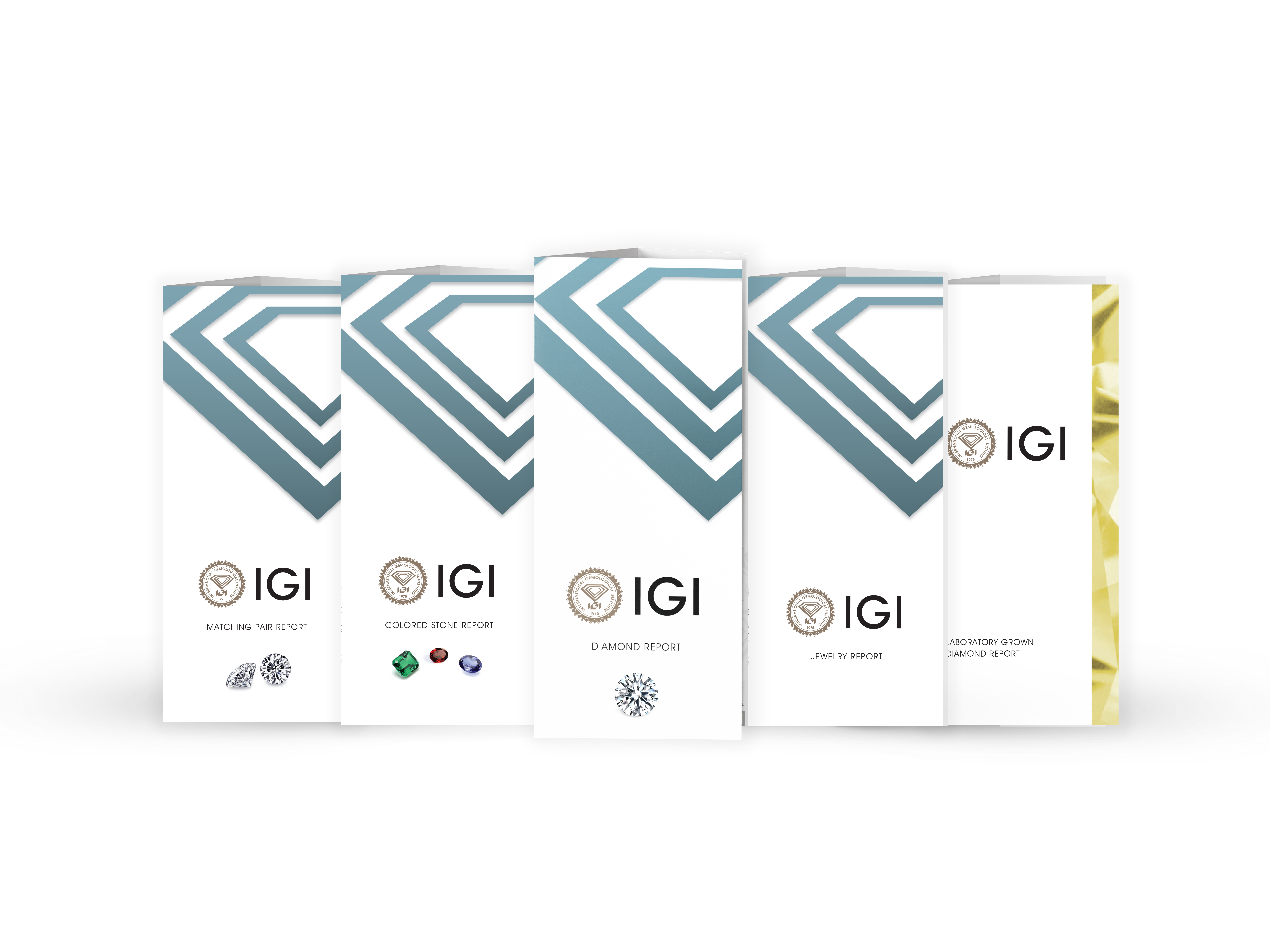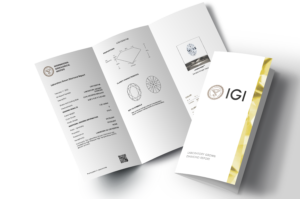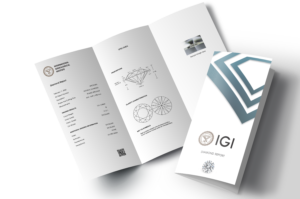Episode 154
Jewelry Journey Podcast – Avi Levy
What you’ll learn in this episode:
- What causes a customer to trust (or not trust) a gem laboratory
- How the International Gemological Institute (IGI) is trying to make the jewelry industry more sustainable
- Why labs, retailers and dealers have a duty to educate customers on gemstones
- Why lab-grown gems are growing in popularity, and why some customers will always choose natural stones
About Avi Levy
Avi Levy currently serves as President of the International Gemological Institute (IGI) North America. With 30 years of fine jewelry expertise, Avi brings valuable experience to the Institute including diamond sourcing, manufacturing, product development, brand partnerships and wholesale trade to major jewelry retailers. Skilled in building relationships and trust within all areas of the supply chain, his leadership skills and expertise gained from various roles have yielded advantageous results and strengthened key partnerships.
Additional Resources:
Photos:




Transcript:
Founded in 1975, the International Gemological Institute (IGI) is the largest independent gemological laboratory worldwide with more than 20 laboratories. Avi Levi leads the North American division of the business, and his goal is to bring this esteemed company into the 21st century. He joined the Jewelry Journey Podcast to talk about why he partnered with SCS Global Services to make IGI’s work more sustainable; how IGI is maintaining trust with clients while updating its offerings; and why he wants to educate consumers on the intricacies of natural and lab-grown stones. Read the episode transcript here.
Sharon: Hello, everyone. Welcome to the Jewelry Journey Podcast. This is the second part of a two-part episode. Today, my guest is Avi Levy, North American President of the International Gemological Institute or IGI, a 45-year-old company. IGI provides the fine jewelry community and consumers with a broad range of services. Welcome back.
You described this as part of your resuscitation or rejuvenation process for IGI. I like those words a lot. Tell me more about them. To me, the internal change is so important because so many companies just do the outside. Are you doing ads or social media in addition to the internal change? What are you doing?
Avi: We’re doing a little bit of everything. Yes, it all starts inside. Defense always wins the game, as they say. It starts inside because you have to change the culture inside. You have to give the people the power. You have to give the people confidence and the backing that you’re behind them, that you want to help them work, you want to help them grow. I always say I want people on my team who are thinkers, people who are doers, people who can help get the message across. That’s bringing new people in as well as talking to the people who have been here for a while and helping them see different things. Everybody likes to have change, but you need to have support.
In addition to the inside, yes, we’re doing things. We have different social media campaigns. We have discussions and talks with our current customers and new customers. We explain to them why it’s important for IGI to do things in a different manner. It’s also important for a service company to listen to its customers, to hear what their customers need today. That goes all the way down from the wholesalers to the retailers to the consumers. Consumers are shopping differently today. Not everyone goes to the store. A lot of people are more online. There’s a lot more information out there that customers have at their fingertips to help educate them. We want to do everything we can so when they click on IGI.org, there’s education that can help them understand the way the market is today, what the offerings are, why certain things are happening, what the reasons for certification are, why it’s important to have an IGI certificate to help verify their jewelry. We also want to teach them about what to look for in shopping today, since it’s changed so much.
Sharon: Are your customers, retailers or dealers, coming to you more often or with different requests because it’s become so important to know where your diamond came from?
Avi: Yes, I would say they are coming to us for those points and more. When you start engaging with a customer and listening to them, letting them know we’re interested in helping to help their business, you’ll be surprised how they will come back to you with a lot of ideas. We try to work out the best ones for that particular instance or experience, but yes, people are definitely coming to us in a much more helpful way, in a much more collaborative way.
Sharon: I would presume that you would deter some people who’ve been in the industry a long time and say, “Forget it. I’ll just go to the guy down the street who does it the same old way.”
Avi: It’s not that we changed everything. You can’t change everything. We’re talking about evolution. It’s all about evolution. As I mentioned before, a lot of things are still the same; it’s just that the offerings are different. The internet has become so important today. Things are being done so much more online, so we’ve got more offerings online. We’ve got more interactive things that help the customers see different products online. People are doing more reports online, so we don’t have to print. We simply have a QR code affixed or some other vehicle where a customer can scan that, and they’ll see the report online. They’ll see educational platforms online. It’s all about getting more interactive with the online experience. We’re on that as well. That’s appealing for a lot of customers, but we still have a lot of people who want it done the old way, and we don’t deter them. We’re still here to help them and service them. We just do it in a different manner.
Sharon: I’m thinking about the QR code. I envision this team got together for a meeting where you had your IT people say, “Well, we can do A, B or C. How about this?” How did this happen?
Avi: The A, B, Cs are the easy part. It’s the D, E, Fs that’s get us into discussions. IT people are also very creative, and they want to think out of the box as much as possible. We’re constantly challenging each other on our limitations and seeing how we can rise above them if possible. You can’t always do everything you want, but you have to try.
Sharon: As part of this whole process, have you upped your presence in the marketplace, your social media, your ads?
Avi: I would say so. We are definitely out there more with ads and social media ads with the idea of collaboration. I think in 2022 and where we are in our lives, collaboration is important. Letting customers know that we are willing to collaborate to bring good things to the end result is important. A lot of people in our industry, they don’t like to go outside their four walls. There’s a hindrance there, and in some ways I understand. There are certain things that shouldn’t be shared, but it doesn’t mean that everything shouldn’t be shared. There are ways to collaborate in very efficient manners, in very helpful manners, that can help elevate people’s business. That’s what we want to see. We want to see people come together for good reasons.
Sharon: I’m thinking about the jewelry itself. How does this impact jewelry? Let’s say I go into a Zales looking for a wedding ring. How does it impact the end process there?
Avi: A lot of the process to get there has not changed. It’s about what happens after. Be it Zales or a different retailer, we’re thinking about how we help a customer see less paper or less plastic. Can we do it more online? That Zales customer, or a Macy’s or a Costco or a Sam’s Club customer, everyone is thinking differently today. If we can help that experience at the store level, at the retail level, we’re going to do it. We’ve created a different point of sale support for retailers that helps on the education side.
Education is most important. People want to learn, but you have to give them the exposure to learn. If you don’t give them the tools, how are they going to learn? If IGI can be on the backside of helping a customer understand why this diamond has 4Cs, why this gemstone has a certain imperfection, where gold comes from, if it’s recyclable or not, whatever information we can supply that can help the retailer make the sale and help the customer understand the process better, we want to be there for them.
Sharon: Are retailers or people in the industry down the line coming to you and saying, “Hey, it would be great to have some material on the source of the gold”?
Avi: Right, or the history of diamonds or differences between lab-grown and natural. Yes, more and more retailers are coming to us and asking.
Sharon: Can you differentiate lab-grown? Do you have the tools to do that?
Avi: We do. We have the tools. We were the first lab to really experience the lab-grown diamond phenomenon. It started in Antwerp back in 2005 when we saw goods coming. A few years later, we saw more goods coming. Management knew right away this was going to be something that we need to address. We need to at least understand where it’s coming from, why it’s here and how to grade it.
Lab-grown and natural have the same chemicals, the same physical and optical characteristics. That’s all the same, but yes, we do grade lab-grown diamonds. It’s a much more meticulous experience than grading a natural diamond because of the process. When you’re looking at something lab-grown, there are a lot of different variations that come up. The diamond itself has different and more tinges than a natural diamond because you’re putting together a solution. You’re putting something together; it’s not coming out of the ground in a natural way. You’re actually creating something. So, there are different things that go into the solutions to create. As a lab, we have to be able to call them out and see them to grade them correctly. We’ve built proprietary machines. We used other standard machines that are out there, and we’re currently looking into how we can update our machines to better detect lab-grown diamonds.
Sharon: Do you have requests where a retailer or dealer says, “Hey, I was told this was a real diamond, but I’m suspicious.” Not suspicious; there’s nothing wrong with lab-grown diamonds, but you want to know.
Avi: It happens all the time, from smaller stones to bigger stones to pieces of jewelry. They come to us to give that final O.K. on what the piece is, so we’ve got to be able to do that for them.
Sharon: How about laser inscriptions? Are only stones of a certain size laser-inscribed? How does that work?
Avi: We do it pretty much for 20 points and up with our normal, every-day type of lasering. It can go down smaller. Now, there are different laser inscriptions that we’re looking into for the diamond. We do laser inscribe all the up way to 10 or 15-carat diamonds. We put the report number on the girdle, and it’s inscribed and it moves on.
Sharon: Is that for your benefit? Is it for you to track the diamond during the whole process?
Avi: It’s probably for everyone’s benefit. It calls out that this diamond belongs to this report number; therefore, it has a history. It has a reference. If a stone comes back to us, we check to see if that inscription is still there. Then we do a matchup, where we take the information in our system to see if it matches the stone that’s been given to us. That inscription is the first option for us to see if the stone has been graded and if it’s got a history.
Sharon: What percentage of natural versus lab-grown are you seeing today, would you say?
Avi: Natural still outnumbers lab-grown, but lab-grown is catching up. If not catching up, then it’s definitely growing. It might have been 5% or 10% of our business years ago. It’s probably getting closer to 25% to 30% of our business. It’s growing. It simply gives the consumer a different option, but at the same time, I think it’s helped do a job where natural diamonds are becoming even more popular as well. We’re seeing people like either one. That’s the beauty of customers and consumers. There are different tastes out there, and the industry is able to give people a little more variety.
Sharon: Why do you think natural has become popular? Because people think it’s rarer, it’s going to become rarer?
Avi: That could be one reason. I think it’s the lure of someone knowing that’s what they want. When they understand the true differences, they’re able to make a choice on what they want. There are some people who have been buying diamonds forever, and they only want a natural or a mined diamond. Then you have other customers who might be price-conscious or whatever the reason may be. Maybe they feel they can get a larger stone for less money. They have option of lab-grown. It’s a personal taste of what people want to go for.
Sharon: What kinds of stones are lab-grown?
Avi: Many gemstones, emeralds, rubies, sapphires, pearls, different things are done now in a laboratory or man-made. The industry has been used to it for a while. I remember when I was much younger, when the first created emeralds, rubies and sapphires came out, and it was a big phenomenon. Everybody was like, “What’s going on? What is this?” There were a lot of naysayers back then for obvious reasons, but with technology, with time, things change. People’s lives change, and we learn to live together. There are still lots of sales going on in natural gemstones, but there are a lot of sales also going on in the created side as well.
Sharon: When you’re talking about emeralds and rubies, you’re not talking about a synthetic stone. You’re talking about a lab-grown stone, right?
Avi: Yes, lab-grown stones. That’s why it goes to back to having a report from a laboratory checking the pieces, so that a customer knows if they bought this, it is what it is or it’s not what it was supposed to be.
Sharon: If I were going to come to your office and look on your desk and see the strategic plan for the next five years, what is in that plan? Besides the fact that nobody knows about whether there’s going to be Covid or not. What is your strategy to grow?
Avi: Some of the things I can share are the things I mentioned, like making our processes and our systems better to handle our customer flows. It’s teaching our people to be better prepared to handle what our customers want. It’s interesting; a lot of my people are saying to me that they want to become gemologists. People have been doing this for so long. They see all the jewelry and the diamonds coming on the table. They get enamored with it, and then they see what the lab does. It builds this excitement and this wanting to learn, to know more. So, I want to be able to feed my people more knowledge.
We’re looking at how we better ourselves for the market. Some things I can’t talk about, of course, but generally it’s about technology, efficiencies, education. Those are some of the things we’re looking to improve on to help us grow in the future.
Sharon: Besides the technical education in gemology, are you training people in service?
Avi: Yeah, lots of training in service, both inside and outside.
Sharon: The customer’s always right, right?
Avi: Most of the time, yes. That’s true.
Sharon: What do you see with the future of sustainability in the jewelry community, in this sector?
Avi: It’s pretty new. It’s still at the early stages, but I see it gaining momentum. As I said before, if we can all do a little better for ourselves, for the environment, for people, for the future, then why not do our part? I think people are seeing that, yeah, it takes effort, but there’s satisfaction with that effort at the end of the day.
We started slowly and it’s catching on. People are telling us stories about what they’re doing, what they’re telling their kids about what they’re doing. They’re excited and proud of what’s going on as well. It’s a buzz you create when everybody gets involved in it. The industry is getting more involved, and I think they want to see what’s possible and what makes sense.
Sharon: Right, I like that word. It is a buzz. What else can you tell us about IGI? What haven’t I asked you that you want to tell us?
Avi: IGI is happy with what’s going on in the industry and wants the industry to continue to do well. We want to be that place people come to. They continue to use us for those services, and I think we’re grateful to be part of this great industry.
Sharon: In terms of IGI, do you consider yourself a powerhouse? A motor prodding the rest of the industry? Are you a leader dragging it behind you? How do you see IGI?
Avi: As a leader dragging it behind. I think IGI serves a very important purpose in the industry being a lab. It’s also about being open to the different things that happen in the industry through the connections I’ve made, the connections that IGI has made. We’ve got a worldwide network, so we are in tune with a lot of different markets around the world and a lot of different levels of the industry. I think we’re probably among the leaders of the industry. We’re looking to see how to continue to be a leader and continue to make the industry prosper and grow.
Sharon: It sounds like a lot of plans.
Avi: It’s a lot of plans, and it’s important. In a way we’re kind of fragmented, but at the end, we’re one big team. It’s not just what IGI does or what my competitor does. It’s about how we can fit into the whole team function because, like I said, it takes everyone to make this grow. The better we work together and put out that message to people, I think the buzz will be created even more from that. Everybody likes to see everyone in unity, working together for shared results and for good results. The industry has done it over the years, and we hope to be part of that movement to make it continue.
Sharon: Avi, thank you so much. It sounds like you have a lot of great stuff going on. I was thinking about how down the line, in 25 years, it will be interesting to see where sustainability is.
Avi: I can’t wait to see it happen. We like to see how things happen over time.
Sharon: Thank you so much.
Avi: Thank you very much for having me. I appreciate it and hope to see you again soon.
Thank you again for listening. Please leave us a rating and review so we can help others start their own jewelry journey.

